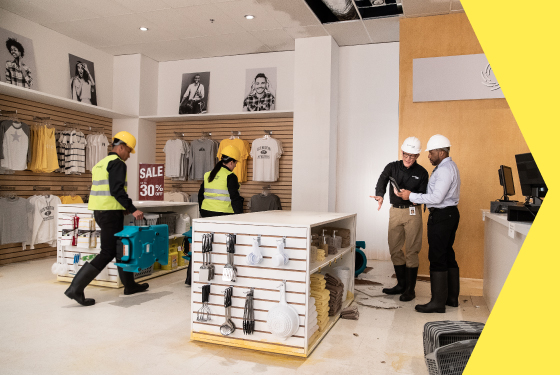Full-Service Property Damage Restoration and Repair Company in East Griffin, GA
Living in East Griffin, GA, means enjoying the warmth of small-town Southern charm, friendly neighbors, and a strong sense of community. However, residents are not immune to unexpected disasters like floods, fires, storms, and mold. These events can cause significant disruption and damage, requiring professional restoration services to get life back to normal.
Certified Restoration Experts You Can Count On
ServiceMaster by LoveJoy is a locally owned and operated company backed by the national ServiceMaster Restore network. This gives our East Griffin customers the benefit of personalized service with the added support and advanced capabilities of a national brand. Our local technicians respond quickly to emergencies and are trained in industry-best practices, providing reliable, scalable service when it matters most.
Customized Recovery Plans and Open Communication
Our restoration process starts with a thorough on-site inspection by a certified technician. We evaluate the damage, explain your options, and design a restoration plan that fits your property, timeline, and budget. From your first phone call to the final walkthrough, our team provides clear updates and guidance to ensure transparency and peace of mind throughout the process.
Full-Service Restoration and Cleaning in East Griffin, GA
We Can Handle Insurance Claims for You
Navigating insurance claims after a disaster can be overwhelming. ServiceMaster by LoveJoy works directly with insurance providers to simplify the process for homeowners and business owners in East Griffin. Our team provides detailed documentation, damage assessments, and comprehensive restoration plans to support fast approvals and minimize delays.
If you're planning to file a claim, call ServiceMaster by LoveJoy first before calling your insurance adjuster. The deductibles might be bigger than the total cost of the restoration service.
Professional Roof Repair and Replacement
We also offer expert roofing services to address storm damage restoration company Griffin, aging, or other issues. Our licensed professionals perform roof repairs and replacements using quality materials and proven craftsmanship to restore structural integrity and protect your property long-term.
Licensed General Contractor for Complete Reconstruction
ServiceMaster by LoveJoy provides comprehensive reconstruction services as a Licensed Georgia General Contractor. We handle full-scale repairs and rebuilding projects for both homes and commercial properties affected by water, fire, mold, or storm damage.
Our reconstruction services include:
Signs You May Need Emergency Water Extraction
Water Damage can worsen quickly if not addressed right away. Watch for these warning signs that indicate the need for immediate water extraction:
- Standing water
- Warped or wet flooring
- Water stains on ceilings or walls
- Musty or damp odors
High indoor humidity - Visible mold growth
- Sudden increases in your water bill

